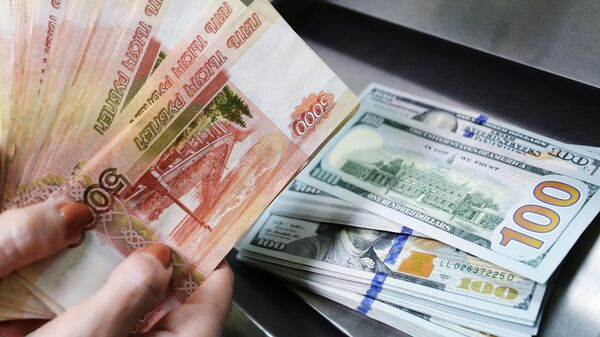The lower the index is the lower production costs are, raising the competitiveness of a country in comparison with the US, the world’s largest economy.
The index comprises four components: wages, labor productiveness, energy prices and national currency exchange rates.
In 2015, the rating of Russia’s competitiveness rose by nine percentage points, with an index of 90 points. The US rating is considered as 100.
The Russian economy managed to increase its competitiveness rating due to the volatility of ruble exchange rates, and the decline in global energy prices, according to BCG analysts.
Over the past 10 years since 2004, the US’ competitiveness has continuously grown in comparison with all other countries, except for Mexico. However, in 2015 the strengthening dollar brought this trend to an end.
The dollar began to rise against other currencies, and US production costs rose.
Meanwhile, in 2014 the ruble exchange rate dropped by eight percent in comparison with 2013. During the first half of 2015, the ruble further dropped by 17 percent in comparison with the first half of 2014.
Thus, it is no surprise that the Russian rating has significantly grown.
From 2004 to 2014 the competitiveness capabilities of the Russian economy gradually decreased and nearly matched the US in terms of production costs. The increase in wages did not allow Russian companies produce goods and services at cheaper costs, according to the BCG report. However, in 2014-2015 the wages increase stopped, which – together with the weaker ruble and energy prices decline – drove production costs in Russia down.
The devaluation impact on the economic growth will not be long-term, Valery Mironov, deputy head of Center for development at the Russian Higher School of Economics, was quoted as saying by RBC.
Justin Rose, Partner and Managing Director at BCG, also believes this is a temporary phenomenon.
"The fundamental trends that made the US competitiveness in terms of production costs level grow over the last decade, have not changed. Manufacturers understand that the national currencies which significantly dropped against the US dollar can quickly get back their positions," he was quoted as saying by RBC.
The BCG global manufacturing cost-competitiveness was first published in 2014. BCG analysts assess the competitiveness of 25 economies which accounted for nearly 90 percent of world exports of products and goods, based on the production costs index.




